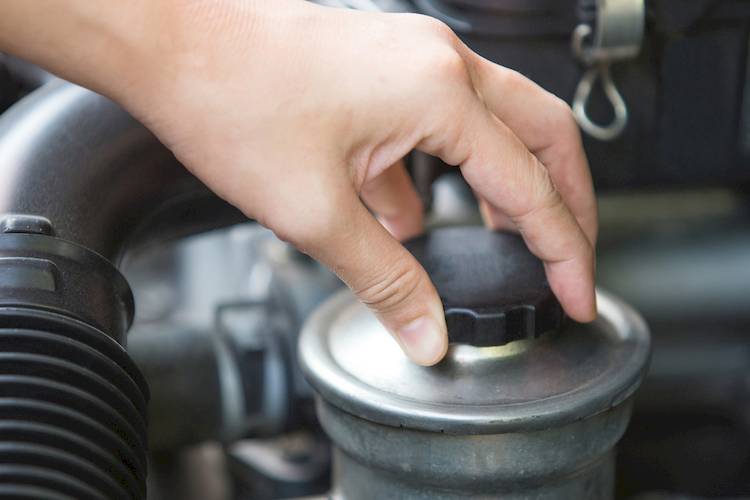

Most cars today use a hydraulic power steering system, although many new models are now coming equipped with an electronic system. In a hydraulic power steering system, power steering fluid is pumped through the lines to the rack, where it helps reduce the effort needed to turn the steering wheel. Because it’s hydraulic, power steering fluid must be stored in quantity so the system can operate. This is done with the power steering fluid reservoir.
Open your hood and you should see the power steering fluid reservoir installed at the power steering pump. It should be translucent white plastic (and will have either a red or black cap). You can see the level of the fluid through the side of the reservoir, and there are level lines denoting when the reservoir is full, when the level is safe, and when it’s low.
Your power steering fluid reservoir is in use constantly – even when the engine is off. The primary purpose here is to simply store the fluid used by the system, providing a place for the pump to draw fluid from, and for fluid to return to once it’s been sent through the rack and lines. It’s not mechanical, but it is subjected to a lot of heat, which will eventually cause the reservoir to need replacement. With that being said, there’s no specific lifespan for your reservoir.
If the power steering fluid reservoir fails, it can lead to a number of problems. Obviously, power steering fluid will leak at the failure point. This is a serious problem, as power steering fluid is flammable and can ignite if it leaks onto a hot surface. Additionally, it can cause low fluid levels for the system, which can damage the power steering pump and also make it difficult to steer the car.
The best defense against a failing reservoir is to have it inspected at each oil change (you can also inspect it visually when you check your oil level or any other time you open the hood). It also pays to know a few signs to watch for that indicate the reservoir is in danger of failure, including:
- Cracks or deterioration in the body of the reservoir
- Low fluid levels (which indicates a leak somewhere in the system, including the reservoir)
- Obvious fluid leaks from the reservoir or power steering fluid on the pump
If you notice any of these symptoms, it’s very important to have your reservoir replaced. A certified mechanic can help to inspect, diagnose and replace the reservoir.



